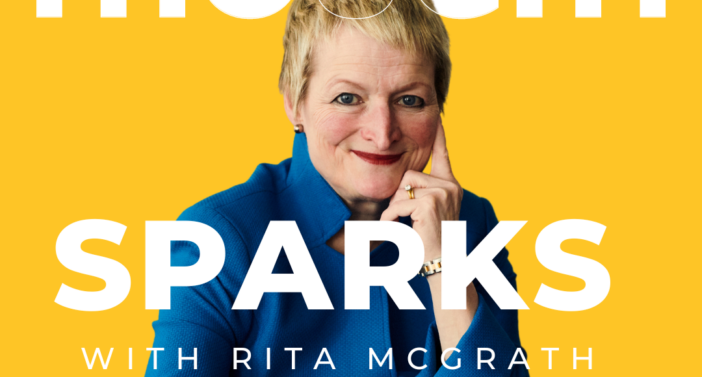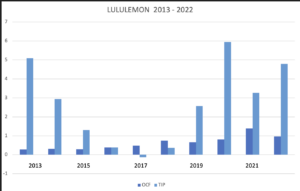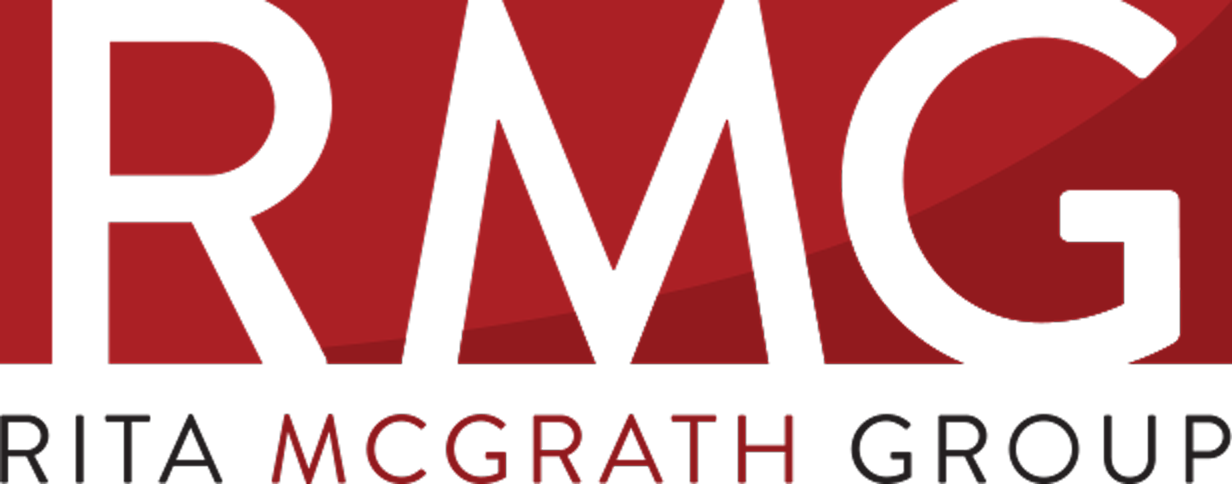
This article was co-authored with Alex Van Putten of Cameron & Associates
We’ve been talking about what gets investors excited about a public company’s prospects and maintain that it’s when a management team can credibly offer the promise of innovation-led growth. But hey, wouldn’t it just be easier to buy a fast-growing company rather than create it yourself? Rarely, the answer is yes. Usually, it’s no.

Recap: The Imagination Premium, a forward-looking metric for future growth
For a detailed explanation of the Imagination Premium and how it is calculated, please see this article or contact us and we’ll send you a copy.
The share price, and hence market capitalization, of a publicly traded company reflects two sources of value. One is the value of the cash thrown off by company operations. The other is the perceived value of growth. Divide the value of growth by the value of operations and you get a metric we call the Imagination Premium (TIP).
A high TIP suggests that investors have confidence in management’s ability to generate organic growth through innovation. Think of a high TIP as a free boost to your market capitalization. Management has both imagined a bright future and effectively conveyed its vision to analysts and investors.
If, on the other hand, your TIP is low or, God forbid, negative, that means investors have decided that your future looks dim. This is almost always terrible news for incumbent management teams. You’ll attract activist investors, calls will be made to break up your company, hostile acquirers start sniffing around and usually there will be demands for the CEO’s head to roll.
As one observer of the activist investor scene noted, “Activist investors target companies that are poorly managed, inefficient, overpaying for acquisitions or suffering from a slew of other maladies that detract from shareholder value. They then push actions that they believe will benefit stockholders such as business restructurings and spinoffs, share repurchases and dividend hikes.” A dead giveaway of the kind of poor performance activists sniff out is when the Imagination Premium is low or nonexistent.
But hey, organic growth is notoriously hard, unpredictable and prone to failure. Why not just buy our way into a higher TIP by purchasing a known quantity and riding along with its growth prospects? A fair question.
Acquisitions are seldom the answer to a low imagination premium
Acquisitions can indeed drive TIP higher, but only in very specific circumstances. The target company must already have a high TIP itself or be in a high TIP category (meaning that other similar companies have high TIP values). By definition, that means it’s going to be a pricey asset to buy because others have recognized its potential. The risk of overpayment is genuine (just ask Newscorp about MySpace).
The leaders who created the high TIP value need to be persuaded to stay (AT&T’s acquisition of Time-Warner Media is a textbook example of messing this up). You need to allow high TIP practices to thrive, which often requires hand-to-hand combat with the legacy practices of your low TIP leadership. If these conditions are met and you don’t otherwise botch the acquisition integration (or lack thereof), an acquisition can indeed prove positively transformative.
For instance, in 2012, Facebook acquired the popular photo-sharing platform Instagram for approximately $1 billion. Consider this – the company at the time employed exactly 13 people! Talk about a high price for a high TIP!
This acquisition allowed Facebook to expand its reach in the mobile space and tap into Instagram’s growing user base. Instagram continued to operate as a separate platform, but with Facebook’s resources and expertise, it grew exponentially and became one of the most influential social media platforms in the world. At the time of the acquisition, Facebook’s market capitalization was around $50 billion. By 2018, this acquisition, the move to mobile and other transformative activities had increased its market cap to $542 billion. Facebook had been able to hang on to the founders of Instagram during that time, as they only left in 2018.
Cash flow and TIP are not the same thing
We have often been asked by management to weigh in on potential acquisition targets with a view toward understanding the likely consequences for TIP. We warn executive teams against acquiring low TIP companies. They may well add cash flow, but all too often cash flow without strong evidence of future growth opportunity does not excite investors.
Let’s walk through Lululemon’s acquisition of Mirror as an example of the kind of analysis we would do.

Have a look at this chart, comparing Lululemon’s operating cash flow to its TIP from year-end 2013 to 2022. In 2013, the company made its 3rd consecutive appearance on Fortune’s list of fast-growing companies, earning its high TIP number. But, as reporters Beth Kowitt and Colleen Leahey observed at the time, the company was in an “uncomfortable” position.
In March of that year, a scandal so widely discussed that it featured in a Jimmy Kimmel skit broke out. Turns out that if you wore one of Lululemon’s popular pants and bent over (which is kind of the point of yoga, isn’t it?) they became see-though! The company described this as “an unacceptable level of sheerness” and axed its Chief Product Officer Sheree Waterson. Three months later, CEO Christine Day announced her intention to resign, with little explanation. She told Fortune at the time that “my values include discretion.”
At the time, Lululemon was a 15-year old company with $1.37 billion in annual sales and 218 stores worldwide. Chip Wilson, the entrepreneur founder, and Day, a corporate type who hailed from Starbucks didn’t have much in the way of nice things to say about one another, according to Fortune. The relationship became unworkable and by the end of that year Laurent Potdevin, formerly president of Toms Shoes was brought in as CEO. Wilson announced that he was relinquishing the Chairman’s seat at the same time.
Potdevin’s tenure was not exactly star-studded. Operational issues, a slew of competition into the firm’s “athleisure” segment and the company’s high price point were one set of issues. Another was that obvious growth areas – into men’s clothing or clothes for kids – had not worked out as planned. As for Potdevin himself, he was accused of having a sexual relationship with a female employee, who resigned in 2014 only to be brought back as a contractor. All of that caught up with him and he was forced to resign in 2018. Note that in TIP terms, cash flows remained relatively steady, but investors were clearly disillusioned with the firm’s growth prospects and TIP actually went negative for a short time.
Former Sephora executive Calvin MacDonald was installed as CEO in 2018, with a reputation as someone who could re-ignite growth, having transformed Sephora into a mobile-first brand and offering innovative products. Investors noticed, and TIP improved.
A panic buy?
The pandemic, of course, was a boon to companies such as Lululemon. Freed from the office and the need to dress up, athleisure became everyday wear, not just something you wore for working out. Sales surged, as did TIP. Companies like Peleton were printing money. The workout at home craze benefitted other startups, like the subscription workout product, Mirror. As I’ve written about previously, Mirror was a seductive, sexy, high-growth startup with what it thought would be a compelling future sales story.
Prior to the pandemic, Lululemon’s innovation strategy aimed to expand its product offerings beyond yoga gear to include athletic apparel and accessories for women and men, covering running, training, and lifestyle clothing using new fabrics. Investors seemed to be responding favorably. But that kind of core innovation is hard work, and it takes time to show results.
What if, instead, you could just with one fell swoop make a company-defining acquisition? Instant acquisition of new customers and fresh cash flow, without the tedious process of creating home-grown initiatives. Mirror was courted and the acquisition of the company for $500 million was announced in June of 2020. The prevailing notion at the time was that the purchase would be synergistic – Lululemon would provide Mirror with distribution, the at-home fitness trend would continue and a significant portion of Lululemon’s customers might incorporate the devices into their fitness routines.
Investors were underwhelmed. The numbers suggest why. Mirror had been valued at a bit under $300 million the year before, after a $36 million venture round. Further, all kinds of investment (and competition) was flooding into the home-exercise market. Doubtless, there were other suitors for Mirror, leading potentially to a panic-buy mentality.
Beware of gold rushes
The relationship between cash flow and TIP for 2021 shows how investors responded to the potentially transformative acquisition. Cash flow surged, even relative to the high-demand first year of the pandemic. TIP? Not so much. Investors didn’t buy the Mirror story.
The Mirror case further reflects a bigger theme. With gyms closed, the at-home fitness industry boomed. One observer likened it to a gold rush. Gold rushes bring out some of the worst biases in decision makers. There is a sense of urgency because everybody knows the rush won’t last forever. There is the belief that establishing a strong position early will be one that can be maintained. There is extreme nervousness about competitors and what they are doing. In an atmosphere like that, making fast, decisive moves can offer an advantage – or prove to be a big mistake in more sober circumstances. Another cautionary tale is Peleton’s acquisition of Precor, another maker of fitness equipment, at the height of the pandemic in December of 2020. Now it, too, is exploring the sale of the company it bought only 3 years ago.
People can get trapped by their assumptions. As Simeon Siegel, managing director and senior analyst at BMO Capital Markets told Modern Retail, “Initially, people believed gyms would be irrelevant and at-home fitness would grow to the moon. Now, people believe at-home fitness is imploding and we understand that gyms are here to stay. I think the point we have to remember just like anything else, is that we run a risk of overgeneralizing always.”
Interested in a similar analysis?
For a free TIP estimate and ideas about what it implies, contact us.
